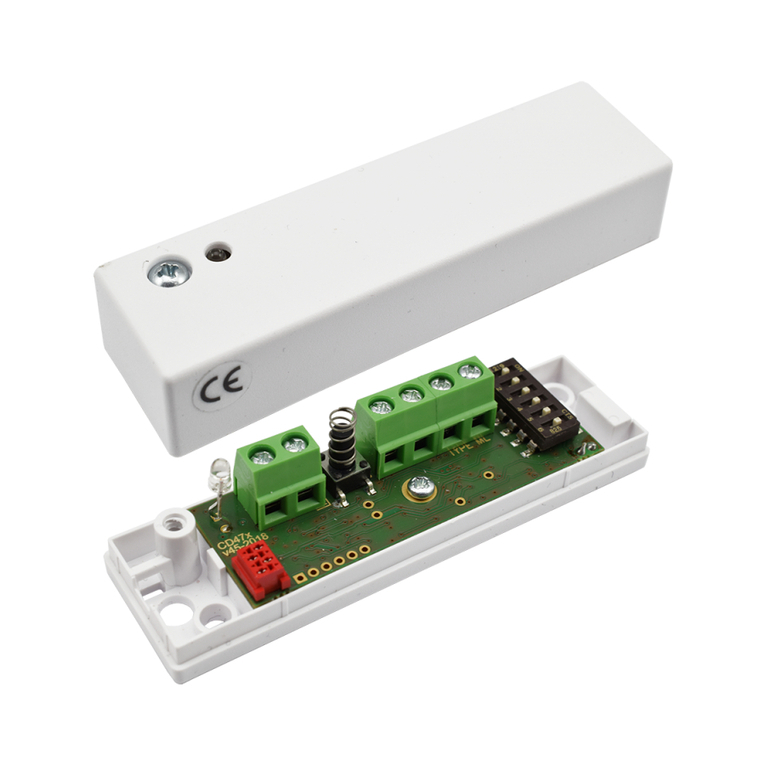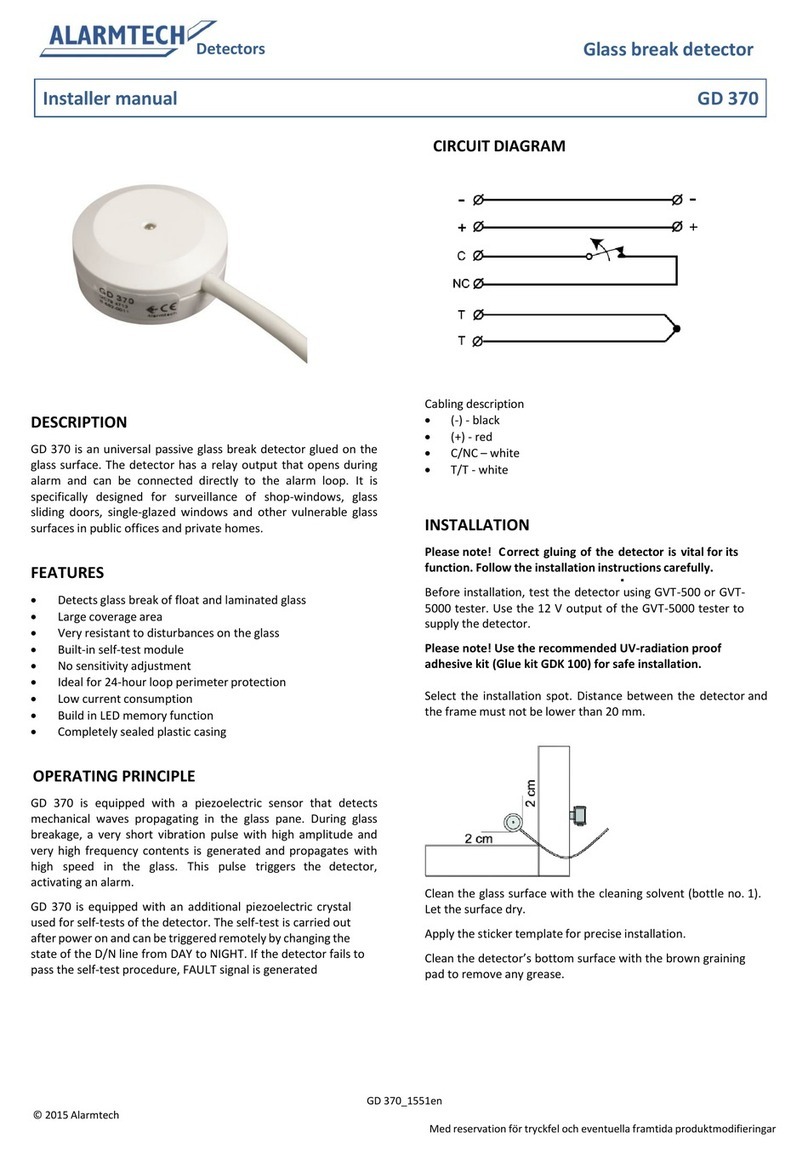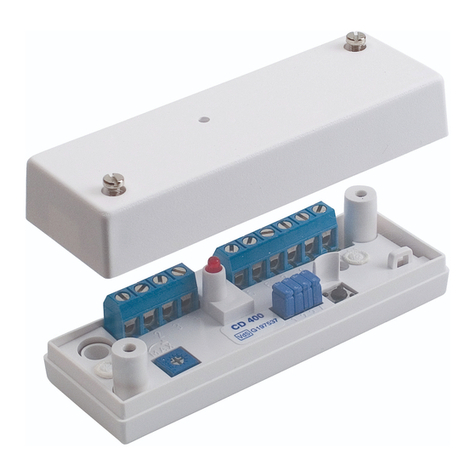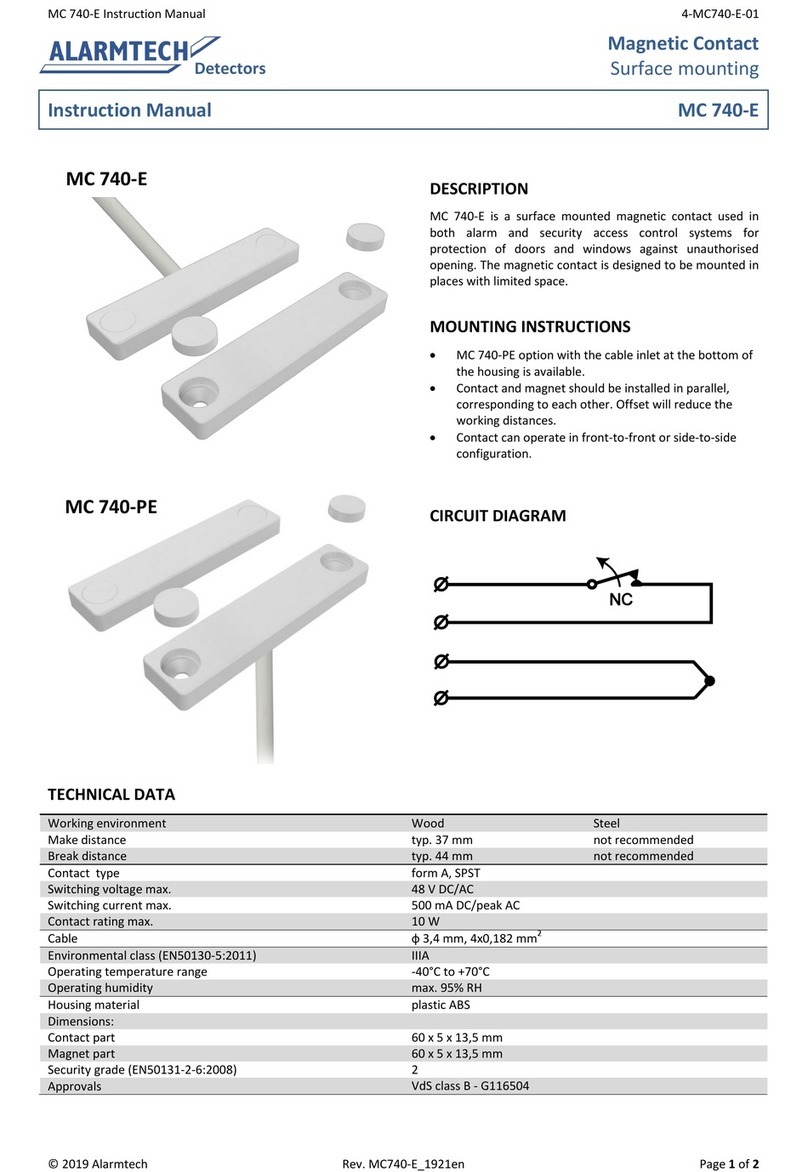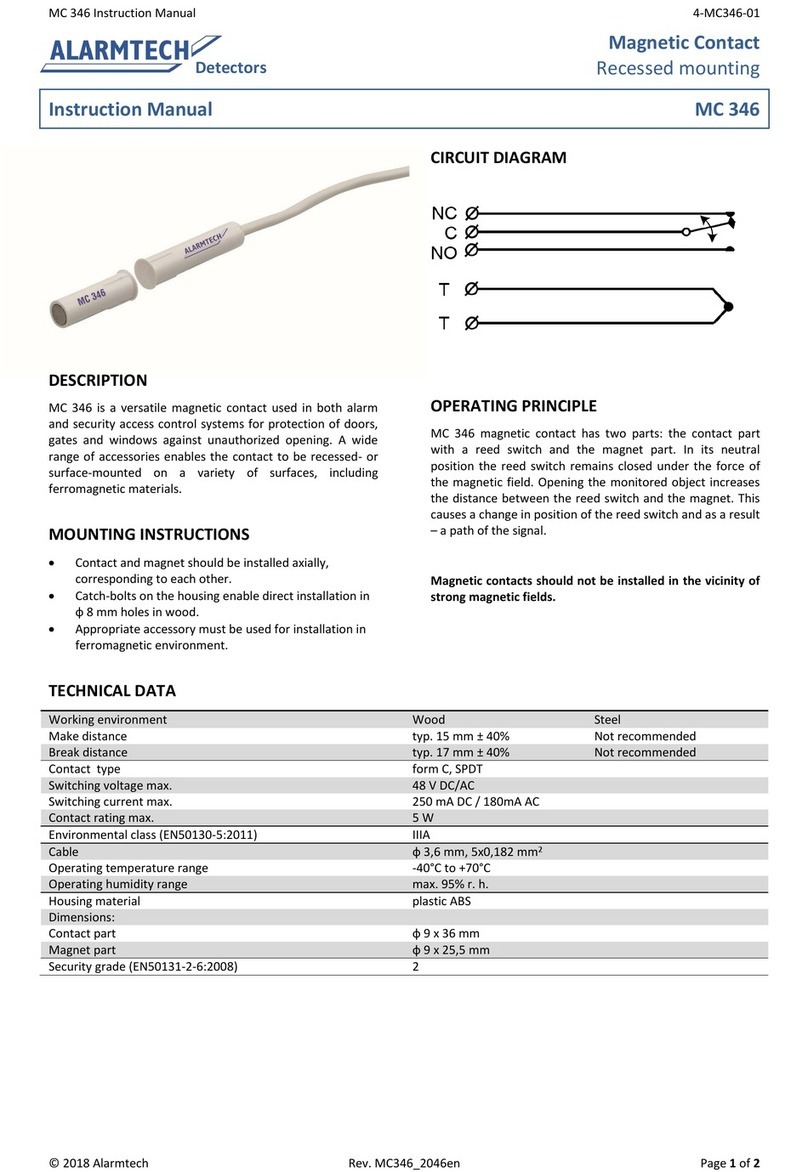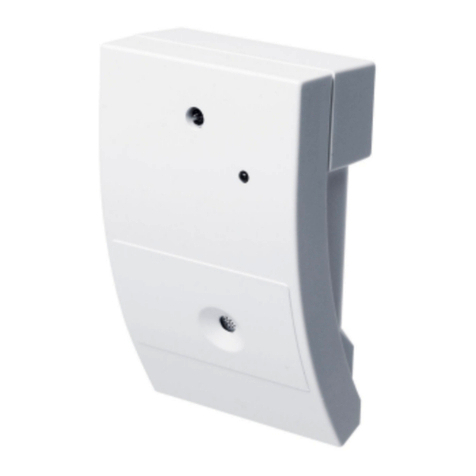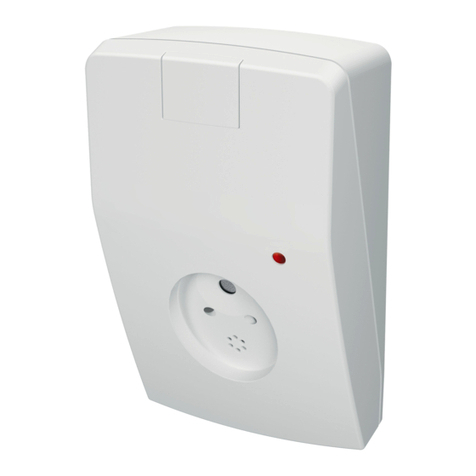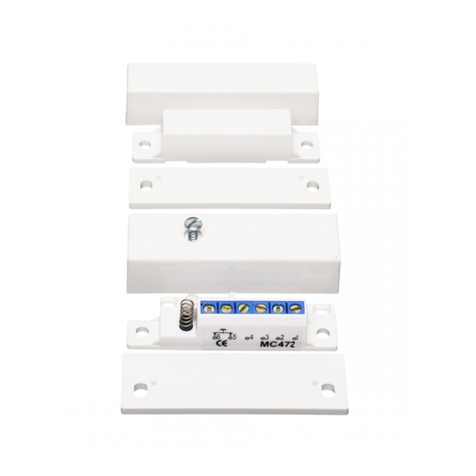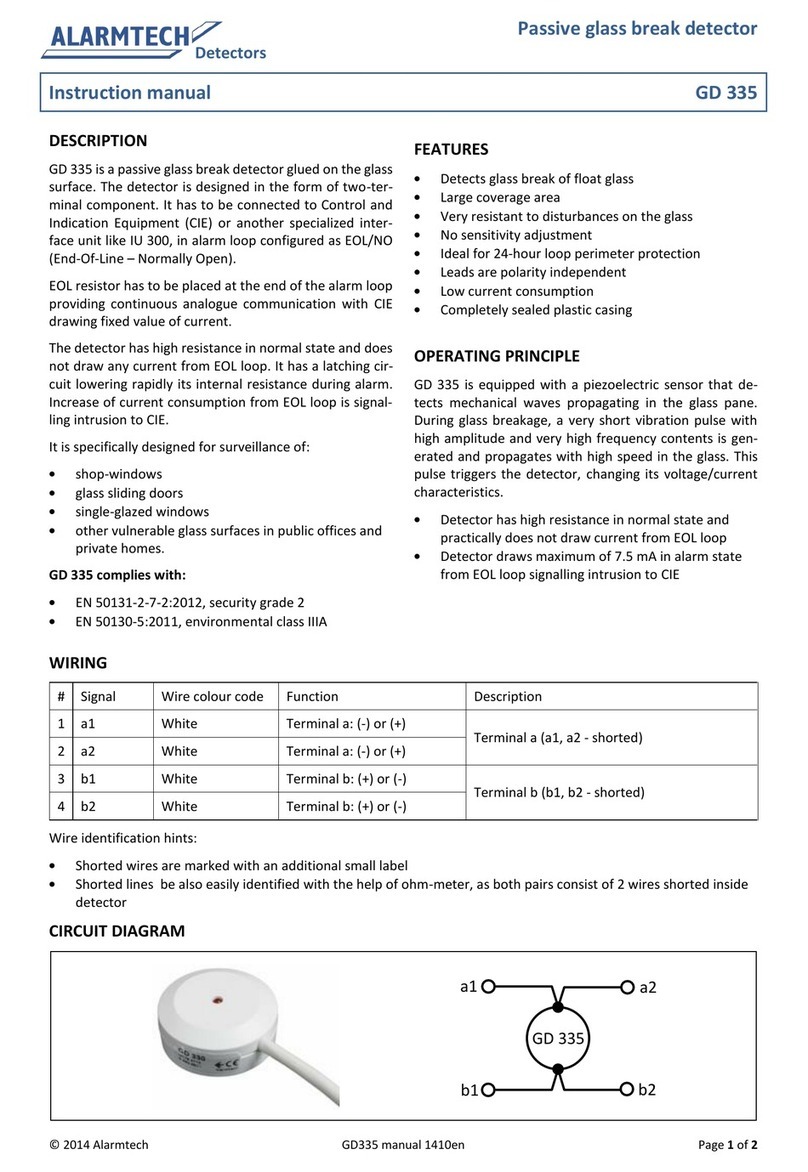MC 470 Instruction Manual 4-MC470-01
© 2021 Alarmtech Rev. MC470_2150en Page 2of 2
OPERATING PRINCIPLE
MC 470 magnetic contact has two parts: the contact part
with alarm and sabotage reed switches and magnet part.
When correctly mounted the alarm reed switch remains
closed under the force of the magnetic field. Opening the
monitored object increases the distance between the reed
switch and the magnet reduces the influence of the
magnetic field on the reed switch until it opens and activate
an alarm.
MC 470 has extra sabotage reed switches to protect the
contact from sabotage (interference) with an external
magnet. When an external magnet is applied to the contact,
the sabotage reed switches open and activate alarm. The
sabotage switches can also be open when the magnet is too
close. The distance between the contact and the
corresponding magnet, at which the sabotage reed switches
open is called sabotage distance.
Notice. Please mount the contact and magnet so the arrow
point to each other.
Notice. Magnetic contacts should not be installed in the
vicinity of strong magnetic fields or on magnetic material.
INSTALLATION
Contact and magnet should be installed in parallel,
corresponding to each other. Offset will reduce the working
distances and may result in faulty operation or lower
security. Arrows on the contact and magnet inner housings
must point to each other. The contact should be mounted
MOUNTING INSTRUCTIONS
Contact and magnet should be installed in parallel,
corresponding to each other. Offset will reduce the
working distances and may result in faulty operation.
Spacers must be used for installation on ferromagnetic
surfaces on the stationary part of the monitored object (ex.
door frame) and the magnet on the movable part (ex. door
leaf).
For sites where it is impossible to mount the contact
directly, spacers and aluminum brackets are available.
Spacers enable installation of the contact on ferromagnetic
surfaces. Brackets can be used to mount the contact parts
away from a ferromagnetic surface or to solve problems
with aligning the contact with the magnet. Contact and/or
magnet should be screwed to the oval slots in the brackets
and adjusted to a suitable position.
Only non-ferromagnetic screws may be used for mounting
the contact.
For the most adequate distance for mounting, magnetic
part should be placed close to the contact part to get
Sabotage distance, then move away magnetic part to get
minimum Make distance.
After the installation, use an ohmmeter to check the
electrical connections and test the operation of the
magnetic contact.
Warning: Applying excessive force to the housing of the
contact may damage the glass body of the reed switches
inside.
Warning: Appropriate accessories must be used for
installation in ferromagnetic environment.
ORDER INFORMATION
ORDER INFORMATION
